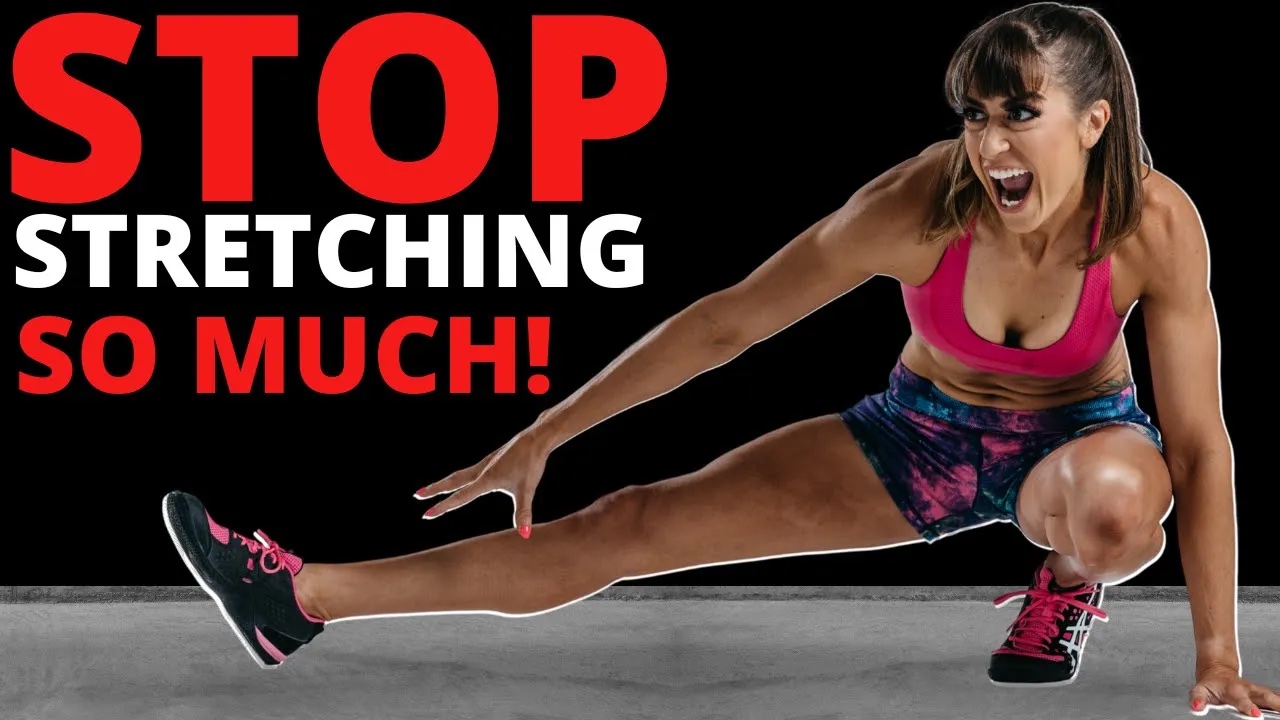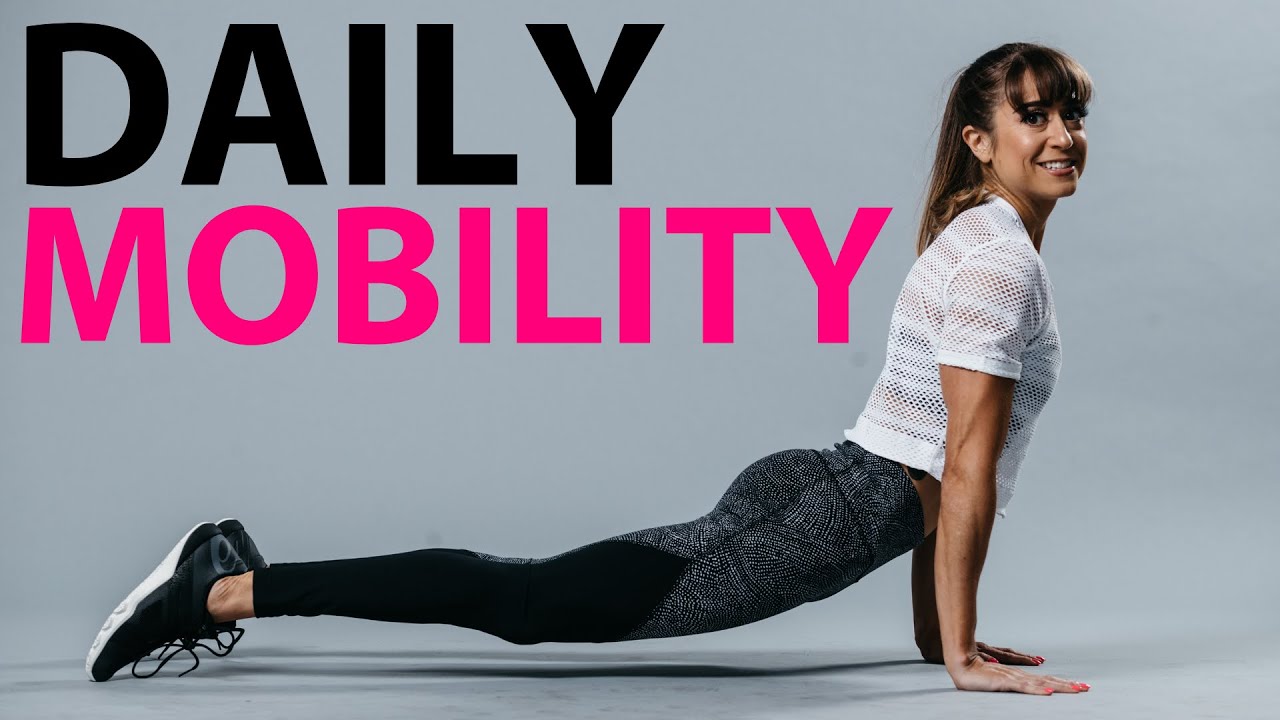
Flexibility Secrets To Make You Feel Younger
Ever feel like you wake up and everything is more sore tired and achy than it used to be after your hardest workout?
Like you aged even a decade overnight?
Feel like your flexibility just POOF, disappeared?
What if I told you that to get it back there was one simple solution….
Stop just stretching more.
Because while most of us think we want to be more flexible, what we actually want is more than that.
We want to improve not only our flexibility but also our mobility and stability.
We don’t want to get up out of bed and feel like everything is in need of oil.
We don’t want to struggling with aches and pains going up and down stairs or getting up and down off the ground.
We want to feel like we can take on any hiking, biking or fitness challenge that comes our way.
That’s why I want to share 4 common reasons why our flexibility work isn’t often paying off the way we’d like and how we can get better results faster.
But first I want to clarify what the heck these three terms – flexibility, mobility and stability really mean.
Flexibility is really the ability of a muscle, or muscle group, to lengthen and stretch.
Mobility is the ability of joints to move through a full range of motion.
Stability is the ability to control and maintain joint movement and position.
All three of these things are linked. If you don’t work on all three components ultimately you won’t see the results you’re really after.
Without proper muscle flexibility, you will have restricted joint range of motion and stability.
Without proper joint range of motion, you’ll have restricted muscle flexibility and joint stability.
Without proper joint stability, you’ll have restriction joint mobility and muscle flexibility.
When we realize how much each component impacts the other, we can adjust our training to address all three components together to see better results faster.
And often not seeing these 3 components as linked is why our flexibility training is getting us the benefits we’d like.
Now how can you make changes that don’t waste your time and have you feeling like you’re moving better than you did a decade ago?
#1: We’re spending time stretching muscles we shouldn’t.
If a muscle feels tight, we often think we need to stretch it.
And while many muscles that feel tight can actually be shortened and in need of stretching, we have to realize that this isn’t always the case.
When this isn’t the case, stretching can actually make matters worse.
So it’s key we are able to determine the underlying cause of tightness first.
A muscle can become tight because of a lack of joint stability or even improper joint mobility or alignment.
Our body wants to protect itself.
If a joint is unstable, it will do what it can to create stability, which means potentially creating muscular tension.
It may mean we create tension in a muscle that really shouldn’t be working that hard to provide that stability.
Until you actually address the muscle that is weak and underactive not supporting the joint the way it should, this muscle will keep becoming tight no matter how much you stretch it.
And even stretching it may perpetuate the instability already there or make it harder to activate the underactive muscle.
Stretching may also make matters worse if a muscle becomes tight because of joint alignment or restricted joint mobility.
Muscles can feel tight because they are actually overstretched.
Take for instance our hamstrings.
They are actually a great example often of a lack of joint stability and joint alignment or positioning causing tightness over a muscle actually being shortened.
So many of us have thought to ourselves “I need to stretch my hamstrings more. They feel so tight!”
But often in the case of our hamstrings, they are actually overstretched due to tight hip flexors from sitting far too long at our computers or traveling in our car.
They may also be tight because of underactive glutes not doing their part to help with pelvic alignment and hip stability so tension is created to help provide stability where it is lacking.
Because of this, while it may feel like you should stretch your hamstrings, stretching actually makes matters worse.
Instead you’d be better served by doing activation work for your glutes and stretching of your hip flexors to restore proper joint mobility and stability.
This correction of postural distortions will ultimately actually HELP your hamstring flexibility without stretching them!
Which leads me to reason #2 we often aren’t seeing the results we’d like from our flexibility work…
#2: We’re not focusing on engaging the opposing muscle group during stretches.
How many times have you done a stretch and just tried to feel the muscle stretching?
Most of us have done this.
And sometimes you even do a stretch and think, “I don’t really feel this that much.” Priding yourself on how flexible you even are in that position.
Or…
“I stretch this all of the time, why isn’t it helping!?”
I see this often with hip stretches.
People supposed stretch their hip flexors a ton, but they never see improvements in their hip mobility.
But it’s because they actually aren’t really stretching the muscles they think they are in the movements.
Too often with moves we go through the motions, mimicking the movements.
And our body takes the path of least resistance, often finding mobility or flexibility from the easiest areas…often the areas that aren’t even tight.
So we end up doing a hip flexor stretch to arch our lower backs or not engage our glutes.
Instead of just mimicking a movement pattern or even thinking about the muscle we want to stretch, we need to focus on engaging the opposing muscle group.
The muscle driving the stretch.
If you want to stretch your hips, focus on squeezing your glutes to drive the hip extension.
If you want to stretch your chest to prevent those rounded shoulders, focus on engaging your upper back to open up your chest.
Not only does engaging the opposing muscle group stretch what you’re trying to stretch, but it can also improve your mind-body connection to activate underactive muscle groups which will also improve your joint mobility and stability as well!
If you’re looking to learn more about specifically improving your hip stretches, check out the video HERE.
#3: We’re sabotaging our flexibility gains with our strength workouts.
Strength work is essential if you want to maintain your flexibility, mobility and stability.
However, too often we do our strength training only working in one plane of motion or not through the fullest range of motion we truly can.
If we want to be more flexible, more mobile and more stabile, we need to build strength through a full range of motion.
This takes what we may passively be able to move through and makes it an active movement we can control.
Only when you do your strength work through a bigger range of motion do you keep the flexibility of muscles you worked hard to create.
If you do your strength work in a small range of motion, you will keep just tightening muscles back up!
So if you’ve worked to improve your hip flexor flexibility and hip mobility, make sure your strength workouts do include movements to go through this full range of motion even if it means going lighter to start.
Lunge lowering your knee to the ground.
Perform step ups from a higher box.
But strength through that full range of motion to maintain it!
Otherwise your flexibility and mobility work will constantly be negated by your other training and you won’t then improve your joint stability through that full range of movement!
#4: Stop just including a “recovery” or flexibility workout.
While having a day set aside each week to specifically and solely work on your flexibility, mobility and even stability is amazing, you need to address these components every single workout to see the best results as fast as possible.
We get good at what we consistently do.
And most of us aren’t truly patient enough for a single weekly session to add up over time.
Not to mention so much of the postures and positions we put ourselves in on a daily basis work against what we’re trying to accomplish.
So if we want the best results possible, every warm up should include this flexibility, mobility and stability work.
And this is why that 3-Part Prehab Process is so key!
By including foam rolling, stretching and activation exercises every single warm up, we can consistently be doing small amounts of the mobility work we need more often, especially to reverse our daily postures.
And not only that, we can prep our body to move better during our training so we can strengthen through that fuller range of motion, maintaining the muscle flexibility we’ve worked hard to create.
Doing this mobility, flexibility and stability work in our warm up also allows us to make sure the correct muscles are working so we don’t perpetuate muscles being overused and becoming tight due to improper joint alignment or instability.
Instead of stressing a super long flexibility workout, try just even 10 minutes as a warm up before every workout! Those small consistent sessions done to help you get more out of your workouts will add up more than you realize!
For my full podcast on the 3-Step Prehab process, click HERE.
Just remember if you want to improve your flexibility, you can’t ignore the importance of also working on your joint mobility and stability.
Be intentional with your training and realize that you want to always include things with a purpose while you focus on what you truly feel working!
Want more amazing Redefining Strength articles and videos straight to your inbox?



